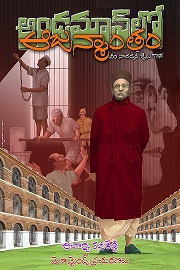A foreigner and a freedom fighter: August 16 was the birth anniversary of the American who took part in India’s Independence struggle and ga...
A foreigner and a freedom fighter:
August 16 was the birth anniversary of the American who took part in India’s Independence struggle and gave Himachal Pradesh its signature apples. Remembering Satyanand Stokes.Who was Samuel Evans Stokes? Some might remember him as the American who, in the early years of the 20th century, fought relentlessly against impressed labour, in the Shimla hills, and eventually forced the British administration to abolish the practice in its territory. Others might remember him as an American who initially came to India to work in a leper home at Subathu in the foothills of the Himalayas. A few would, perhaps, associate him with Gandhi, C.F. Andrews and other leaders of that era. He was the lone ranger who gave the hills of Shimla a permanent boon in the form of Red Delicious American apple variety that later went on to change the face of the region that subsequently became Himachal Pradesh.
Samuel Evans Stokes, Jr. — who later in his Hindu avatar was named Satyanand — was all that and more. Not many in his immediate and extended family were aware of Stokes’s many-faceted personality. Little was known about this extraordinary man until 1999, when his granddaughter wrote An American in Khadi . This biography, revised and somewhat updated, was again republished by Indiana University Press, the U.S., as An American in Gandhi’s India , with a foreword by His Holiness The Dalai Lama.
Born on August 16, 1882, to a distinguished and wealthy Quaker family in Philadelphia, Stokes, at the relatively young age of 22, came to India to serve in a leper home. His parents would not have imagined that their son was embarking on a journey of no return.
At the Leper Home, Stokes’s mentor, Dr. Carleton, was rather pleased with his youthful American volunteer and entrusted to him some elementary surgical procedures. Finding his inability to speak the local language a deterrent in emotionally reaching out to the patients, Stokes soon picked up pidgin Hindustani in its Pahari dialect.
That summer Dr. Carleton sent him to Kotgarh, a pretty little hamlet 50 miles beyond Shimla on the Hindustan Tibet Road. Stokes walked to Kotgarh since there was no motorable road. It was love at first site, for that captivating cluster of villages was the one immortalised as the “Mistress of the Northern Hills” by Rudyard Kipling. He did not know that Kotgarh was to become his life-long abode and his karambhoomi .
As time went by, disillusionment began to set in. Stokes saw a wide gap between what the missionaries preached and practised. Besides, though the locals extended to him due respect as a “white sahib”, and behaved deferentially, there was no emotional empathy. “There seems to be an invisible barrier that stands in the way of any natural unaffected relationship,” Stokes concluded.
Convinced that his western clothes and alien customs was the problem, he decided to forsake it. Though a scion of one of the wealthiest American families of that time, Stokes decided to live a life of abnegation; a decision his family and friends did not understand or appreciate.
Stokes to join independence movement:
In December 1920, Stokes was a delegate from Kotgarh to the All India Congress Committee session in Nagpur, the only American to have had this unique distinction. He was also the only foreigner who signed the Congress manifesto in 1921 that called upon Indians to give up government service and join the freedom movement.When the Prince of Wales was scheduled to visit in 1921, the British Indian administration and the Congress party naturally took contrarian positions. A meeting of the Punjab Provincial Congress Committee (PPCC) was scheduled for the afternoon of December 3. Stokes was on his way to Lahore to attend the meeting when he was arrested at Wagah. The charge against him was sedition and promoting hatred between different classes of His Majesty’s subjects. Stokes was offered bail but he turned it down. By that afternoon, most key members of the PPCC including Lajpat Rai, Gopi Chand, Santanam were arrested. Gandhi called the arrest of Stokes as a “unique move on the part of the government” in a front page article in Young India. He was tried and sentenced to six months of simple imprisonment. Far away in the United States, the news of the Stokes’s arrest was headlined in several newspapers including Philadelphia Ledger , TheNew York Times and many others.
For the next 42 years, Stokes’s life in India took many turns. One of the most interesting aspects of his life was the “gradual evolution of his religious beliefs” that made him increasingly interested in Hindu philosophy. He converted to Hinduism in 1932.
The leader and social reformer died on May 14, 1946 at Shimla. Ironically India’s top leaders were gathered there, discussing India’s future constitutional framework with the visiting Cabinet Mission from England. It was a death unwept and unsung. He was cremated in Shimla and his ashes later taken to Kotgarh. Even Himachal, whose current prosperity is due to the pioneering work of Stokes, has forgotten him.
As his granddaughter and biographer Asha Sharma says, “There is no bust or statue in Shimla, no commemorative postage stamp, no institution or road named after him, no recognition by government.”











No comments